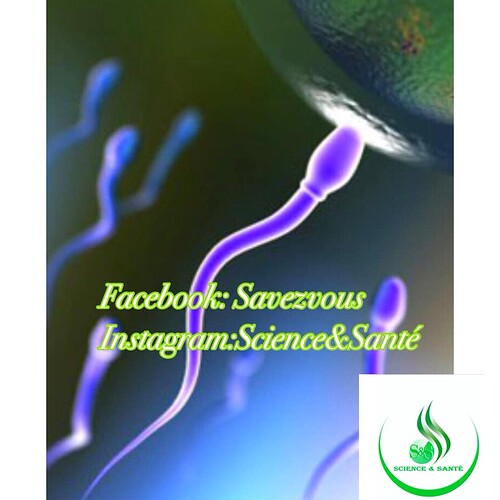The oligospermia
The Oligospermia, or oligozoospermie, is an anomaly of sperm characterized by a sperm concentration lower than normal values. The fertility of man can be diminished, and the couple can then meet difficulties to design. However, if sperm concentration is an important parameter, it is not a discriminatory factor for human fertility, contrary to the azoospermia (total absence of sperm). In Theory, it is enough for just a sperm for fertilization to take place.
The can exist in isolation, but it is often associated with other sperm anomalies: a asthénospermie (insufficient sperm mobility) and a tératozoospermie (too many spermatozoa of abnormal form). We’re talking about trace-Asthéno-Tératozoospermie (Oats). The impact on fertility is in this case more important, because the power power of sperm (already less numerous) is altered due to their morphological defect and reduced mobility.
The causes
As for all sperm anomalies, different causes may be the origin of the oligospermia because many factors can alter the process of the:
An infection that has caused an obstruction of the channels channels or an inflammation of the vesicular vesicles;
A lack of hormonal stimulation (extreme oligospermia);
The lesion of a testis following an infection (Orchitis), a surgical intervention, a testicular torsion badly supported;
A Genetic Anomaly (severe oligospermia);
A Varicocele;
Some Medicated Treatments (chemotherapy, Anabolic Steroids, hypertension drugs, gout medicine, interferon prescribed in some viral diseases…);
Exposure to certain toxic substances: Alcohol, drugs, Tobacco (including for an in-Utero Exhibition), and probably some pollutants of the environment (Phthalates, pesticides);
Testicular exposure at a high temperature in certain risk trades;
A General Disease (Liver, kidney).
According to its origin, the oligospermia can be transitional or irreversible. But often, the oligospermia remains of unknown origin.
The symptoms
The Oligospermia is not manifested by any symptom, if it is not a difficulty to design for the couple.
The diagnosis
The is diagnosed during the spermogram systematically carried out in man during an infertility balance. In this analysis of sperm, different parameters are evaluated:
The Ph of sperm;
The volume of the ejaculate;
The concentration in sperm;
The mobility of sperm;
The morphology of the sperm;
The vitality of sperm.
The results are compared to the threshold values defined by the who (1). If the concentration in sperm is less than 15 million / ml of ejaculate or 39 million / ejaculate, a oligospermia is suspected.
A second or even a third spermogram will be made at 3 months of interval (a cycle of spermatogenesis for 74 days) to confirm the diagnosis. The number of sperm spermatozoa can indeed vary considerably from one ejaculation to another according to different factors (duration of abstinence before the collection, fatigue, infection, stress, exposure to toxic substances, etc), and the oligospermia may not To be in some cases that transitional.
Depending on the results, we distinguish different degrees of oligospermia:
Light Oligospermia: between 5 and 14 million sperm / ml;
Moderate Oligospermia: between 1 AND 5 million sperm / ml;
Severe Oligospermia: concentration less than 1 MILLION / ml.
Other exams can be prescribed to better assess the impact of the on human fertility, detect the cause of this oligospermia and guide the care:
The Migration-Survival Test (TMS) or selection-survival test, generally realized after the spermogram and systematically before any amp technique, allows, after centrifugation of the sperm that will select the “best sperm”, to evaluate their number, Their mobility and survival at 24 hours and thus to estimate the number of suitable sperm, in the end, to impregnate an oocyte;
A hormonal balance to detect possible hormonal insufficiency;
An ultrasound of the testicles,
Etc.
Treatment and prevention
The Takeover of the oligospermia depends on its cause, if it is found.
If a toxic cause is suspected (consumption of alcohol, drugs…), the man will have to limit his exposure to the toxic. A Spermogram will be realized again to control the count. In Case of varicocele, a cure for varicocele can be proposed. If the cause is hormonal, a hormonal treatment allows, in certain situations, to revive the spermatogenesis.
If the oligospermia cannot be treated, different amp techniques will be proposed to the couple according to the degrees of oligospermia and the results of the TMS:
Intra-Uterine Insemination (Iiu) if the TMS shows at least 500 000 to 1 million mobile sperm. The simplest amp technique, artificial insemination is to deposit in the womb the most fecundating spermatozoa at the time of ovulation (induced in women after a light stimulation);
In vitro fertilization (IVF) can be proposed in the event of failure of the iiu, in case of more severe oats or oats. IVF is to reproduce in laboratory the fertilization and the first stages of embryonic development. For This, oocytes are collected in women after ovarian stimulation, and then put in contact with previously prepared spermatozoa;
In vitro fertilization with microinjection (Icsi) is often proposed in case of severe oligospermia. This technique is to select and prepare a sperm to inject it directly into the mature oocyte, for a “forced” fertilization.
